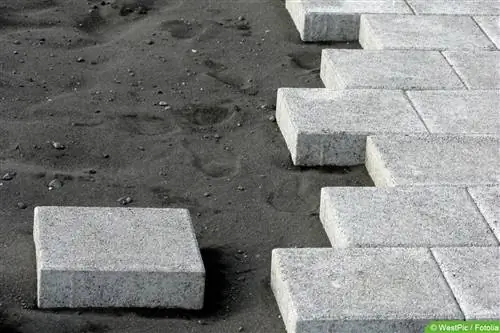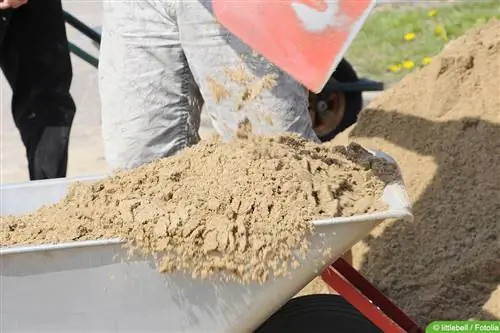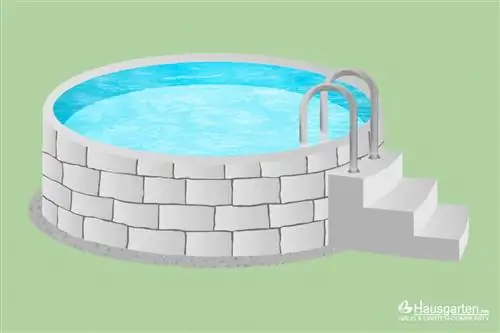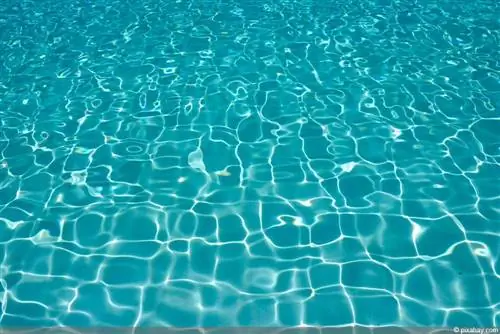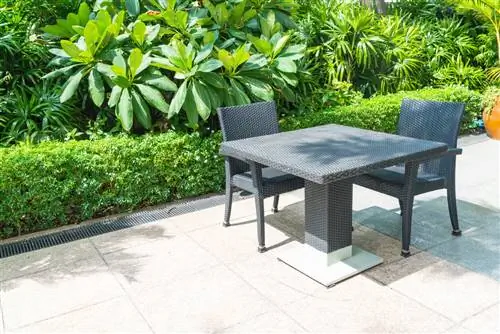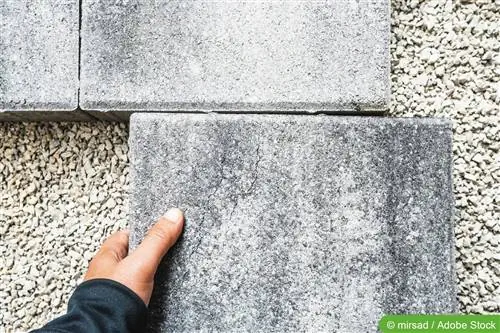- Author admin [email protected].
- Public 2023-12-17 03:39.
- Last modified 2025-06-01 06:48.
Using panels as a base for a pool is easy and requires little effort. However, there are also other advantages that are particularly evident in demountable pools.
Advantages of the plates
If a swimming pool is to be set up, the surface must be prepared accordingly. A slope of more than one percent is detrimental to both the garden and the lifespan of the pool.
For this reason, the soil must be prepared accordingly. To create a stable foundation, a pit is first dug, which is solidified, filled with gravel, gravel and sand and finally sealed with concrete. Experience has shown that laying out weed fleece also makes sense.
Slabs are a cost-effective and significantly less complex alternative to concreting the foundation. This makes them the ideal solution for all areas where a pool needs to be set up quickly or the foundation needs to be removed again. Allotments or rental properties fall into this category.
Materials
There are mainly three materials that can be used as a base for the swimming pool:
Natural stone slabs
Natural stone slabs can be used if, for example, they will still be visible on the edge around the swimming pool. It is also possible to use it if you already have cut pieces. As a rule, however, they are too expensive as a base.
The advantage is that the look is very attractive. There are also a large number of different degrees of hardness. The heavier the pool is when filled, the harder and thicker the stone slabs should be.
Concrete slabs
Concrete paving slabs are comparatively inexpensive to purchase and have the advantage of being available in numerous different formats. They are easy to install and can be easily adjusted. They are also extremely durable and resilient as well as easy to clean.
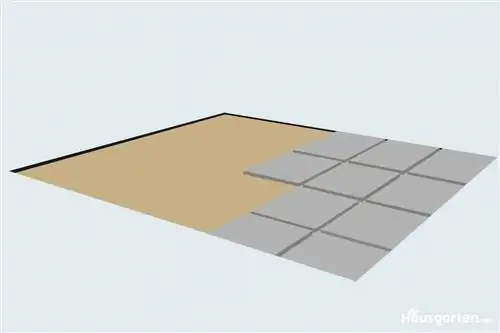
Styrodur
Styrodur is rigid foam boards. The material has several advantages. For example:
- easy laying
- low weight and therefore easy to transport
- gives in a small amount
- easy editing
- very low price
- various strengths and types
Just four to seven euros per square meter are enough to lay the Styrodur panels. Because it gives, the material easily compensates for small unevenness while still remaining stable. The low weight of the rigid foam makes both transport and laying out easier and reduces overall costs and effort. Because Styrodur can be worn and worked on even by individuals without any difficulty.
Note:
The advantages of Styrodur panels are particularly evident in rental properties and leased gardens. Because here the underlay must be able to be removed quickly, easily and with as little residue as possible.
Construction - step by step
The ideal surface for a swimming pool consists of several layers. In uneven areas, the panels should only be the last or top layer. This always applies if there is not already a solid and straight foundation.
Because in these cases it is enough to carry out a few steps. These are:
Control
First you have to use a spirit level to check whether the floor is level. A one percent gradient is still problem-free for both inflatable and framed pools. This means that the difference in the surface area of the substrate should not be more than one centimeter in height per one meter in length or width.
Customization
Experience shows that if there are larger deviations, it makes sense to make an adjustment. This means that at least holes have to be filled and excess parts have to be removed. Quartz sand or gravel and sand for filling, a spade for removal and a vibrating plate for compacting are useful. In any case, a foundation that consists of several layers and is provided with a weed fleece is optimal.
Lay out
Whether a substructure is created with sand and other layers or whether slabs are simply placed on a leveled subsurface depends of course on the existing conditions and the effort. It is important that the floor panels are aligned correctly and that there are no excessive gaps between them. Therefore, the following step is crucial.
Final inspection
Once the panels have been laid out, they must be checked again. If there are any unevenness, they must be leveled out. This may require, for example, more sand or gravel or the removal of raised areas. Again, a spirit level should be used to check the surface.
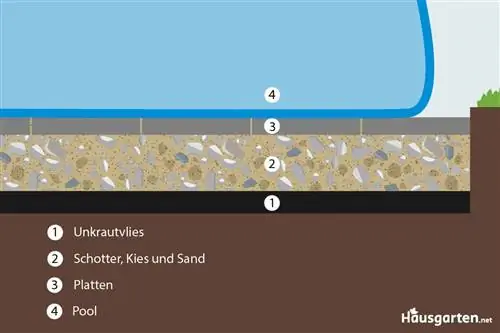
Use on the foundation
How a foundation should be built under the pool depends on the type of pool. However, the sequence of layers differs only slightly. If plates are used, they look like this:
- Stake out and dig the pit
- Compact soil
- Spread weed fleece
- Fill gravel, gravel and sand
- Condense layers
- fill with concrete if necessary
- Place paving slabs or Styrodur and align
The pool can then be set up. It is important to ensure that the base does not shift.
Tip:
A deeper foundation that is not completely filled provides greater stability. The edge also prevents the individual elements from moving.
Lay out on earth
If a corresponding foundation has not already been laid and one is not to be dug, the procedure is still similar. The procedure is as follows:
- Measure and mark out the area
- Remove the grass from the soil and remove stones and other foreign objects
- Remove or even out unevenness
- Compact soil
- Put weed fleece underneath
- Apply paving slabs
If the stone slabs are very rough, it may make sense to apply an additional cover to protect the bottom of the pool from damage. The added advantage, especially with inflatable pools, is that getting in and running in the pool is much more comfortable.
By compensating for unevenness, the floor can withstand stress better and has no annoying edges or points. Installing a protective tarpaulin or weed fleece prevents annoying plants from getting through the joints. However, removing grass beforehand prevents the formation of mold and rot.
These processes could, on the one hand, produce unpleasant odors and, on the other hand, produce harmful substances. Since these penetrate the soil, they can also affect nearby plants.
Tip:
Grouping the panels can be useful in order to achieve greater stability and prevent the base from shifting.

